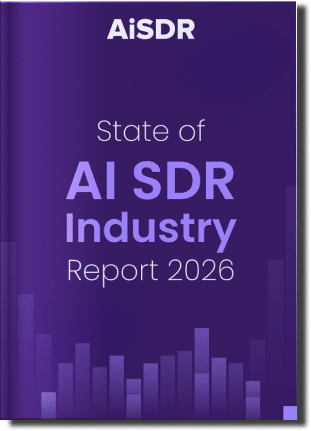5 Signs Your Marketing Messaging is Giving Off Major BS Vibes

It sounds like a 90s commercial.
And I don’t mean that as a compliment 🙃
It’s one of my favorite phrases whenever I check my copywriting team’s content and see something I don’t like.
Don’t get me wrong. Sure, I’m a 90s kid, and I love the nostalgia – cheesy jingles, over-the-top voiceovers, Sony walkmans.
I can’t help but savor that surge of nostalgia when I see something from that era.
But as a marketer in the 2020s, whenever I come across messaging that would have been organic when I was a kid, I know the vendor is bs-ing me. They’re either trying too hard, or they’re hiding something.
Because in 2025, if your message feels like it belongs on a Saturday morning cartoon break, people know you’re BS-ing them.
Tldr:
- Goal: Increase the performance of your marketing messaging across various collateral
- Tactic: Cross-check your messaging by asking yourself 5 questions
- Result: 37% increase in conversion rate from the landing page + 293% increase in ad click rate
What’s wrong with 90s ads?
If you’re also a 90s kid like me (or dare I say an 80s kid?), you might remember this ad 👇
As much as I loved this ad in the 90s, from a present-day marketing standpoint, a great deal of messaging used in these ads is so extreme, inaccurate, or cheesy that it’s downright cringe-worthy.
And here’s why:
- It’s heavily biased instead of being transparent and authentic, which compromises the believability of the message.
- It’s feature-heavy instead of answering the question “What’s in it for me specifically?”
- It’s impersonal and problem-agnostic as it aims to appeal to the largest possible audience.
- It’s ignoring the competition and artificially creating the environment in which the advertised solution has no alternatives.
- It’s got a lot of jargon, deliberately clouding the viewer’s perception with buzzwords and dense lingo.
And if not deliberately intending to convert the client at all costs (even by lying or distorting the reality), it still leaves the user and their unique needs ignored.
It’s an approach that has no room in the modern marketing world.
So if your sales copy has any of these signs, it’s time to revisit it.
Sign #1: Evaluations aren’t backed by 3rd party data
You don’t get to declare your solution the “best | most efficient | most innovative | etc”. That’s for your customers or unbiased experts to decide.
Here’s the cold hard truth: You’re not an objective judge of your own product.
At AiSDR, for example, we never say we’re the best AI SDR agent.
What we say instead is that we are:
- The original AI SDR (quoting several of our clients who came to us saying “I want to speak with the original AI SDR, not the impostors”)
- One of the top 3 AI SDRs according to TechCrunch
- A top-performing AI sales assistant according to G2 Winter 2025 quadrant
So, skip the empty superlatives. If you don’t have third-party validation, ground your statements in facts or avoid evaluations altogether. Otherwise, it just sounds like you’re patting yourself on the back.
And nobody trusts that.
Question for self-assessment: Does my copy contain any evaluations? And if yes, can you easily add a link to a 3rd party source for the evaluation?
Sign #2: There are lots of marketing buzzwords
I swear, one of these days I will create a BS-buzzword bingo (or drinking game) for every new copywriter who joins my team. It’s going to be loaded with classics like:
- Revolutionary
- Game-changing
- One-of-a-kind
- Perfect
- Paradigm-shifting
- So you don’t have to
… you get the idea.
Here’s the thing: Less than 0.01% of the solutions in this world are actually any of these things.
My product isn’t one of them. Chances are, yours isn’t either. (Or at least, not yet.)
Instead of leaning on tired cliches, use “show, not tell”.
Show a story that proves your value and makes the user think these words about your product.
Pack the value in the most sexy, appealing, and transparent way. Be clear. Be specific. Be real.
Use simple, conversational language a human would actually say and skip the buzzword salad.
Question for self-assessment: Does my copy contain any buzzwords?
Sign #3: It doesn’t show any imperfections
Perfection is the realm of philosophy.
It’s nice in theory.
In reality? It doesn’t exist.
There is always something your product can do better. And there’s always something a competitor does different (and dare we say better?). And that’s okay.
But if you position your solution as a “perfect” fix for XYZ problem, you’re setting your clients up for disappointment. And they’ll start looking for the catch.
Instead, be upfront about where you’re not perfect. Call out what you plan to improve and what you’re still improving. Be honest about where the tech falls short, whether it’s your product or the entire category.
Vulnerability and honesty sells because they’re trustworthy. Perfection only exists on paper.
Question for self-assessment: Is my copy suspiciously perfect?
Sign #4: You don’t openly share the reason for FOMO or discounts
Think of those countdown timers on offer pages that magically reset once you clear your cookies.
People like to be tricked, but only when they can’t tell how or when they’re being tricked.
So unless you’re David Copperfield walking through the Great Wall of China, you should always give a clear, honest reason why your offer is time-limited or discounted.
For example:
- Are you planning a big upgrade and want to retire the previous approach / product line?
- Are you сlearing out stock before the new season?
- Are you testing new features and need initial traction / alpha users / early adopters?
- Are you simply trying to hit your sales goal before the quarter ends?
Any reason is valid and better than no reason at all, even if it’s not always easy to admit.
Question for self-assessment: Does my copy clearly state the reason for a limited offer?
See for yourself what makes AiSDR humanly awesome
Sign #5: You jump to conclusions
If you’re making assumptions about your audience, it’s probably because you didn’t do enough research.
And that’s dangerous.
Assumptions don’t just show misalignment in the problem-solution fit. They can divert the attention from more pressing issues, causing more long-term damage than short-term growth boosts.
Wrong assumptions can also lead to bad messaging, and that you don’t fully understand your customers’ real problems.
What’s worse is that bad assumptions trigger emotional reactions, putting you at risk of negative sentiments towards your brand from the get-go.
Once people feel misunderstood (or worse, manipulated), that negative vibe sticks.
And no clever message or offer can undo it, even if it’s the greatest messaging ever created. Negative emotions will outlive any positive impacts you aim for, because negative sentiment is stronger than positive.
So if you can’t explain why you’re making a claim – or backing it up with data – you better avoid jumping to conclusions altogether.
Question for self-assessment: Is my copy based on actual facts or feedback, or is it based on our assumptions of the status quo?
Result
By cutting out the BS messaging and revisiting our copy, we saw a 37% increase in the conversion rate of our landing pages, as well as a 293% increase in the click rate for our ads.
And because our copy avoids overselling or promising the world, customers have more realistic expectations when they start using an AI SDR.
And we’ve seen our cohort retention revenue consistently improve as fewer customers churn.
More on the topic:
Subscribe to our Newsletter

Check out 5 signs that say your messaging is BS and how to assess it








